

Marvel Comics Presents ran for 175 issues from 1988 until 1995. Each issue included four eight-page stories with typically two or three on-going features (and no ads). It spotlighted some of the leading creators of mainstream comics over a period of precipitous economic growth and even more rapid decline. Reading through it is an opportunity to revisit any number of weird aspects of 90s superhero comics. This blog is a primitive, oddly regimented, manifestly scattershot crawl through an often disappointing but occasionally splendid comic. All image copyrights are Marvel's. Issue credits linked below. Updated on Wednesdays.
Marvel Comics Presents #46: March 1990(8.5.20)
Credits: grandcomicsdatabase

Ten months have passed since Rob Liefeld's Cyclops cover for MCP#19 and things have changed a fair bit. Most conspicuously, P. Craig Russell's subtle inks aren't here to keep the hyper-rendered tendencies at bay, so Wolverine looks stretched-to-the-point of bursting out of his skin. It's also clear from the rear cover that Liefeld has (depending on your sympathies) zeroed in on what'll be his distinctive but weirdly uniform style. Wolverine's face is functionally interchangeable with any of the characters on the rear save the most superficial elements. We're not yet in Liefeld as unwitting-self-parody terrain, but we've certainly left behind any illustrative ambitions in favor of the raw transcription of 90s extreme dude energy. The letters column contains some effusive praise for "Panther's Quest" but also a pretty strange off-hand reader remark: "Even though, for the most part, I hate mutants, this story has been pretty good."
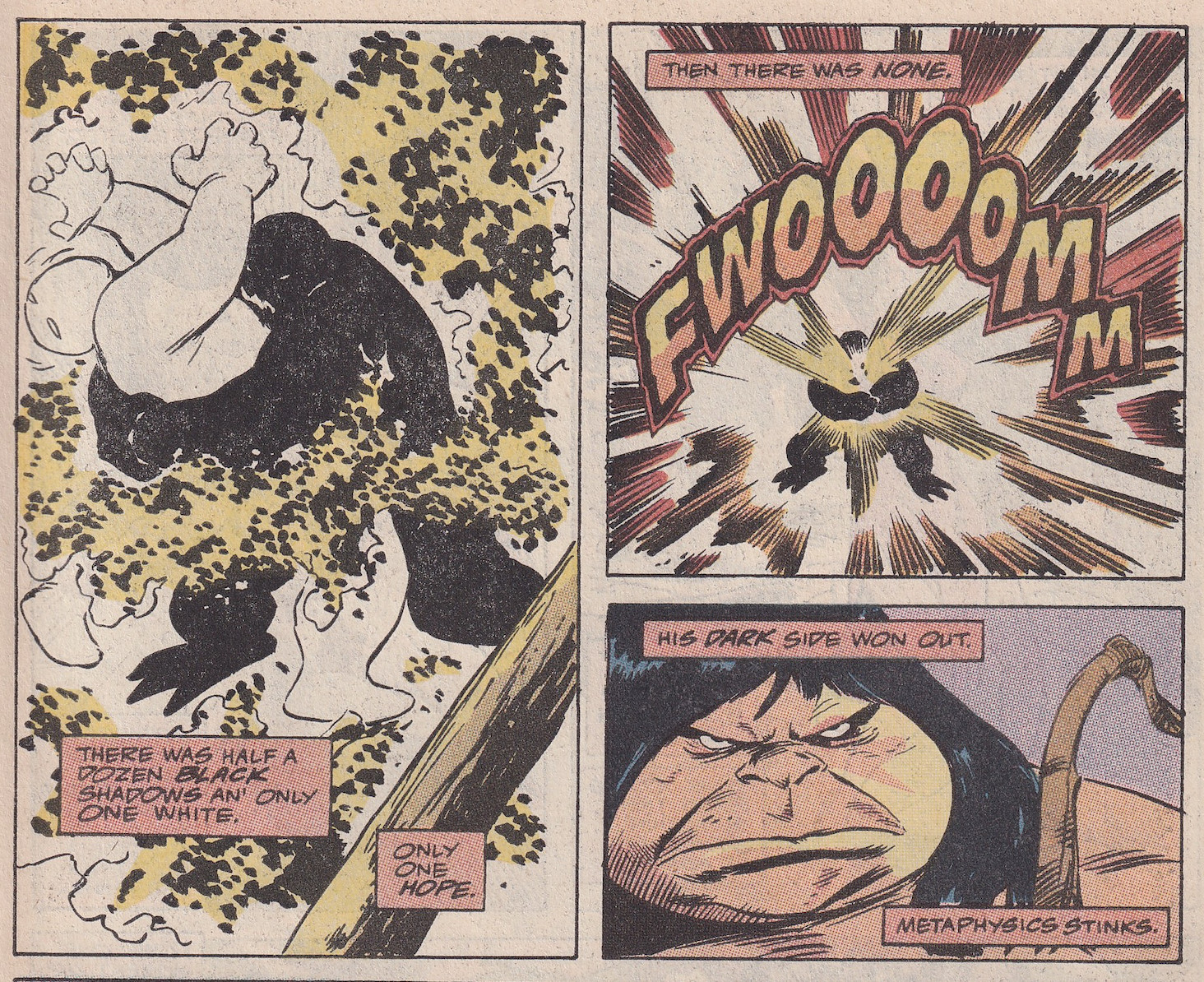
A. Wolverine, "Black Shadow, White Shadow" [9/10]
This installment is in something of a holding pattern as Wolverine squares off against Black Shadow and White Shadow is apparently destroyed. Design-wise, it's an interesting outing, however. Given the stripped down Shadow design, the heavier inking style and contrast-y backgrounds serve as an attractive background for the primarily monologued action.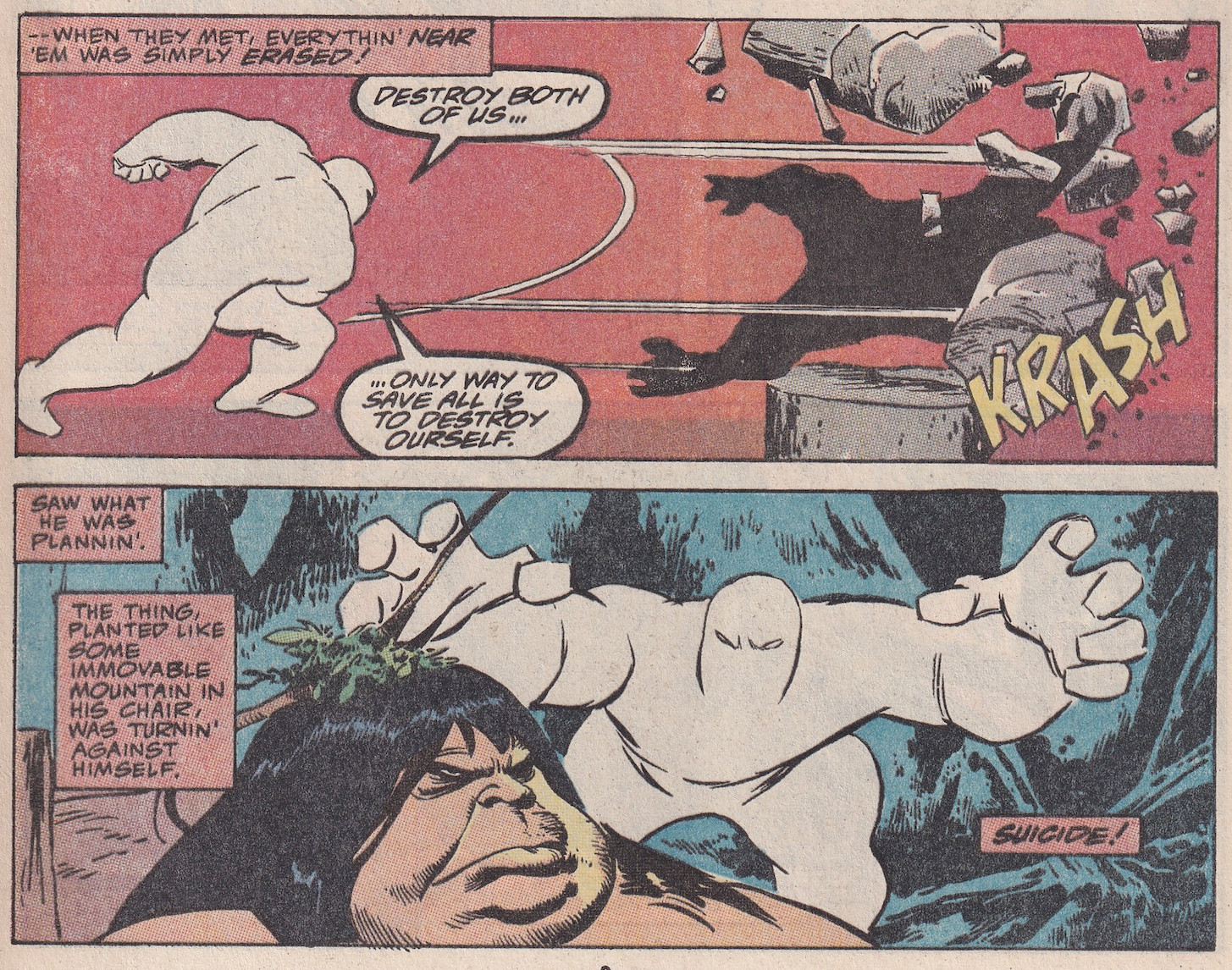
It's clearer, too, why the initial Hong Kong setting, while nicely mapped out by Buscema, was a poor fit: given the fairly tight style, the only way to make Black Shadow look remotely interesting is to embed him boldly colored spaces as a kind of anti-Pac Man. Again, Yomtov is up to something obvious but fairly appealing here: blue-green backdrops complementing the orange Wolverine costume.
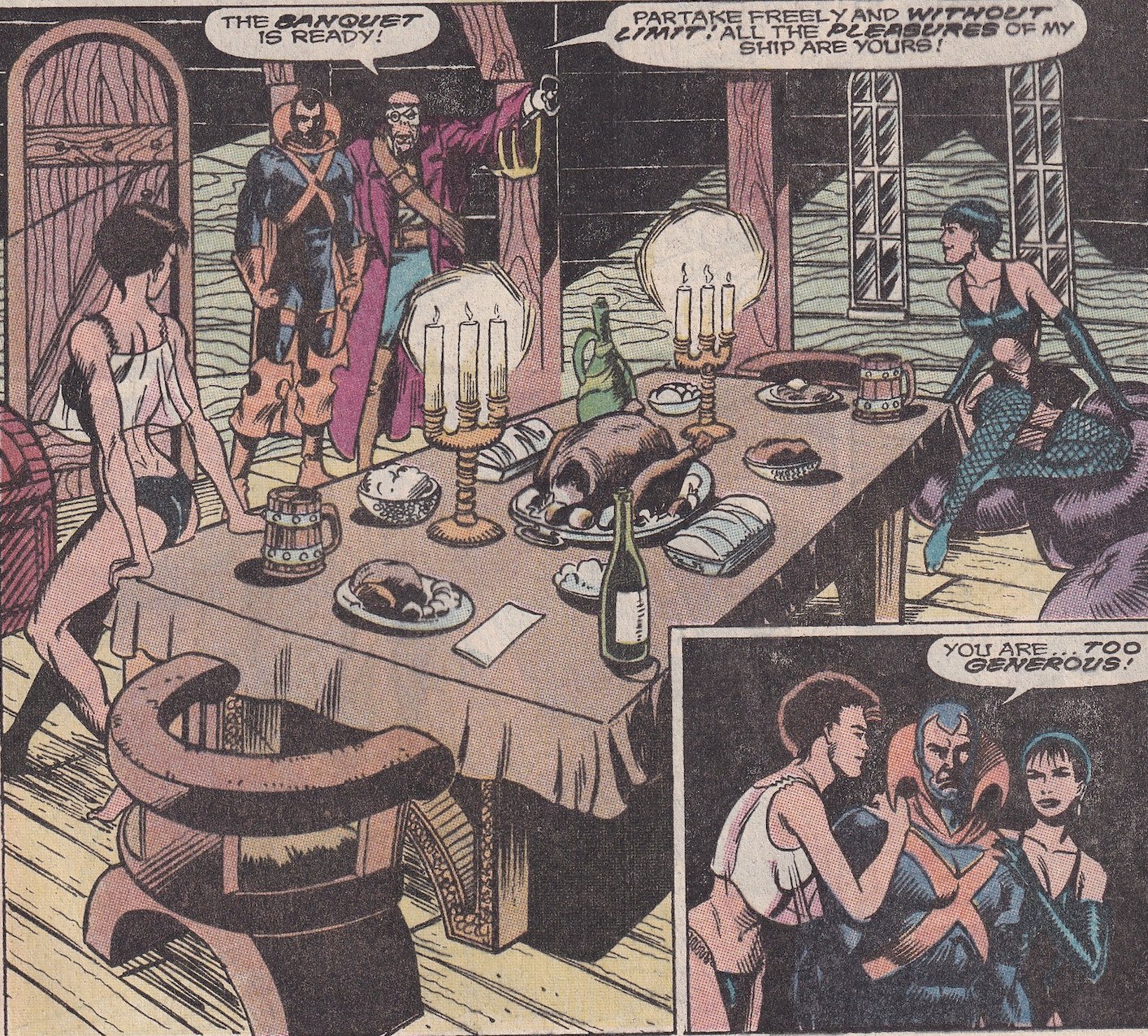
B. Devil Slayer, "Lost Souls" [1/4]
It's difficult to approach this feature with anything but the starkest cynicism when the opening narration reads: "His name is Eric Simon Payne. Like Wolverine, like Punisher, his history is written in the blood of his enemies." Sure. Great. For better or worse, this story seems exceptionally unlike Wolverine and Punisher outings, partly because of its sensibility-defying dream logic. Devil Slayer begins, shrieking into a vaguely nautical void, only to be unsuccessfully enticed by a steam-punk ghost pirate, the Flying Dutchman.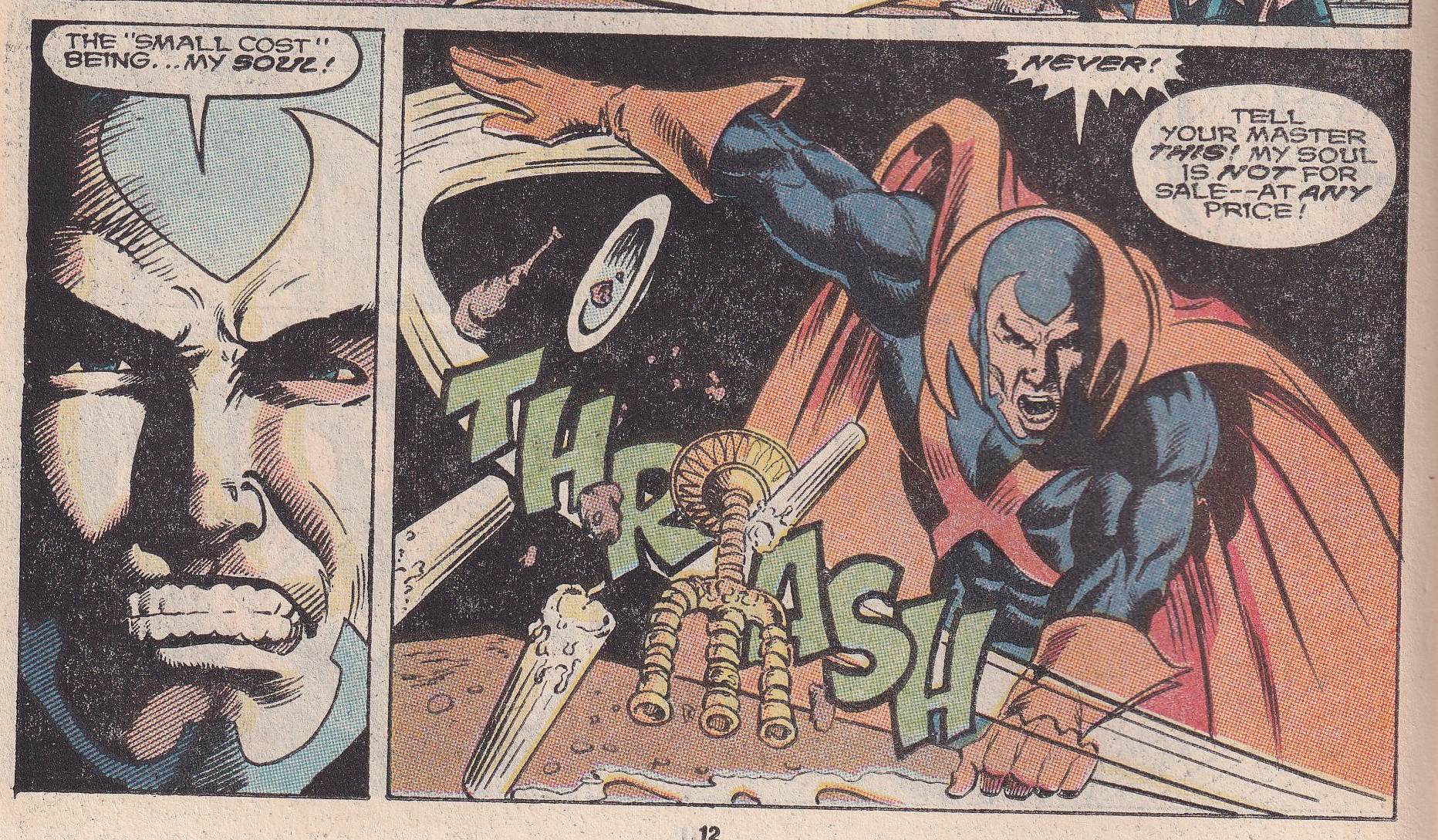
After rebuffing the offer to exchange his soul for, I guess, dinner and coitus, Devil Slayer is transported to "Central America" where he effectively turns into GI Joe and saves a small village. Lower levels of coherence are difficult to imagine, but, sadly, it's all deathly boring. This looks to be the unheralded return of Dwight Jon Zimmerman who scripted a competent enough Ka-Zar piece back in MCP#16.
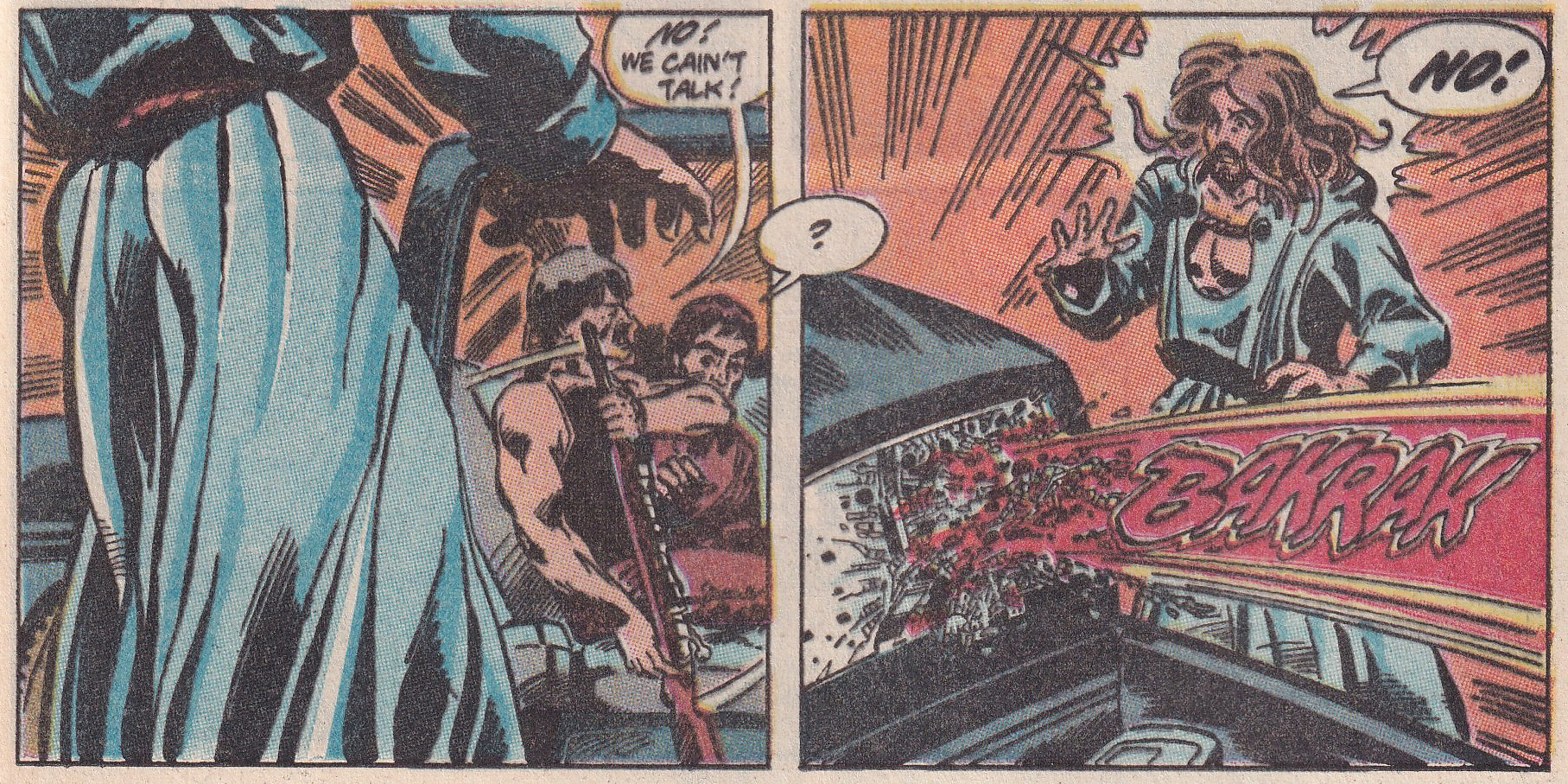
C. Aquarian, "A Gift of Death"
Fabian Nicieza pulls Aquarian off the Marvel garbage pile and plops him into an exceptionally grim, convoluted crime drama. Aquarian is almost killed by two racist gang members, one of whom blows his brains out through the back of truck. Aquarian then heads to the home of a woman who's husband--an undercover FBI agent--was just murdered by the recent suicide victim who, as it turns out, is the brother of the wife.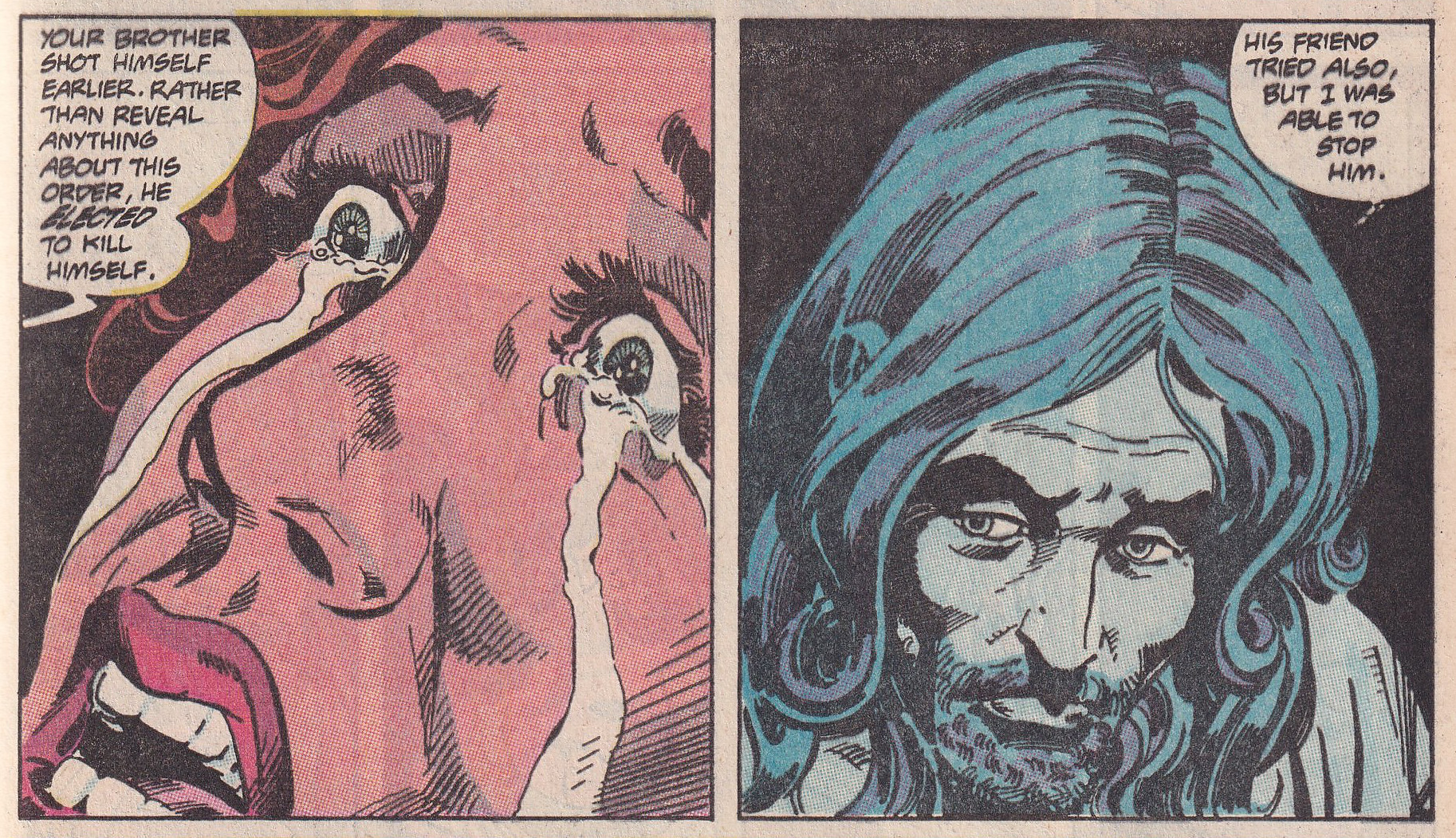
For something so bizarrely twisty, it's competently worked through, but it's paired with meandering blather from the Aquarian who's imparting some kind of cosmic understanding of death upon the woman in question. The star of the show is, however, the absolutely staggering panel from Hugh Haynes, featuring the suicide-by-way-of-frantic-shotgun. It's narratively jarring and, as a Marvel comic, something that looks fit only for mid-nineties Punisher books. Strange, almost provocative stuff.
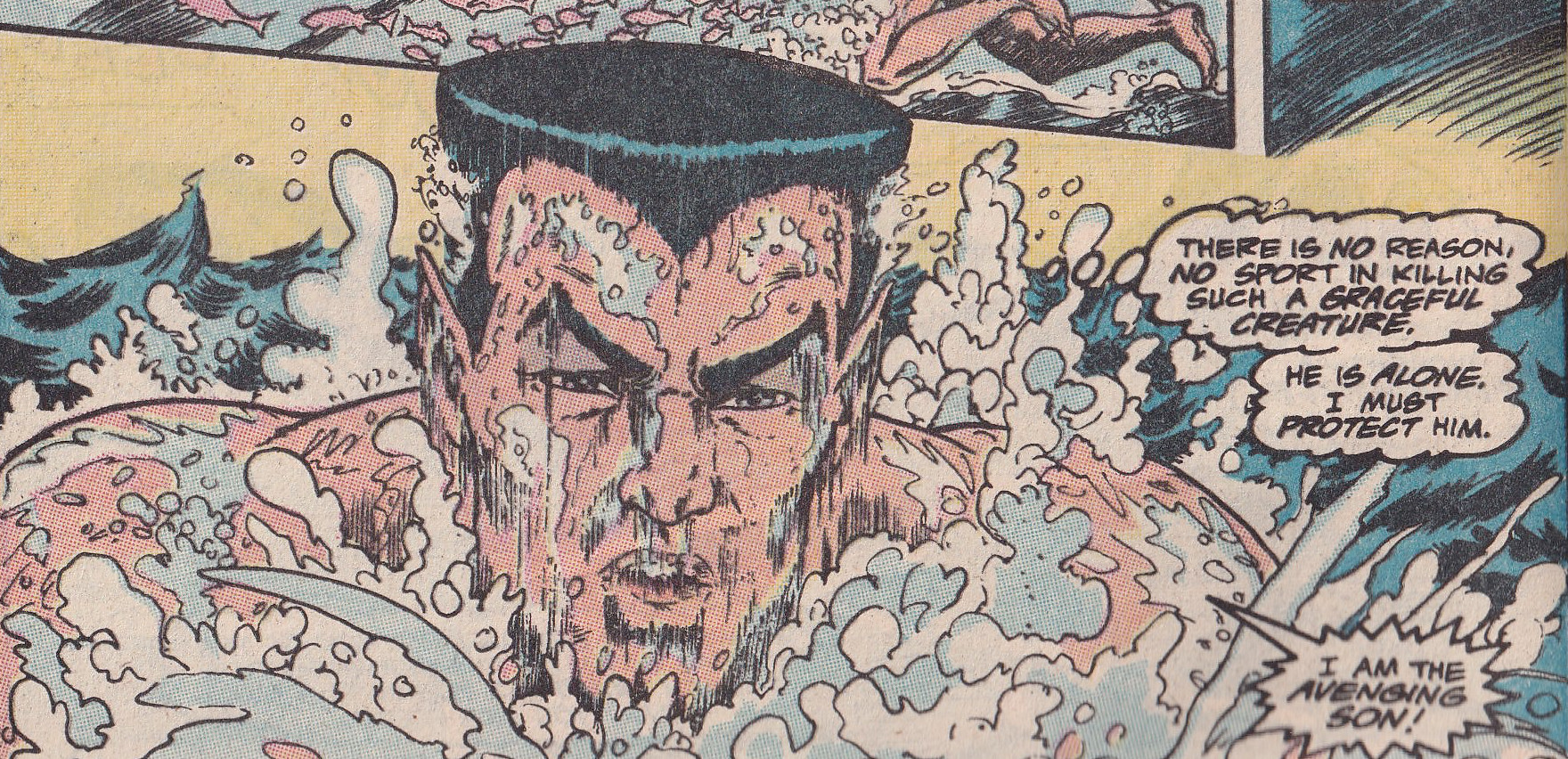
D. Namor, "The Eye that Sees"
Our last Namor feature in MCP#33 was a "silent" story decrying oil pollution. The present feature is similarly concerned with environmental issues and, I suppose, marks the emerging sense that it's far easier to work with Namor's setting--and public awareness of environmental concerns--rather than Namor's awkward character dynamic. In fact, Namor receives only limited attention here as we're privy to a morality play with a whaler seeking the vengeful murder of a humpback he was hunting when Namor killed his brother.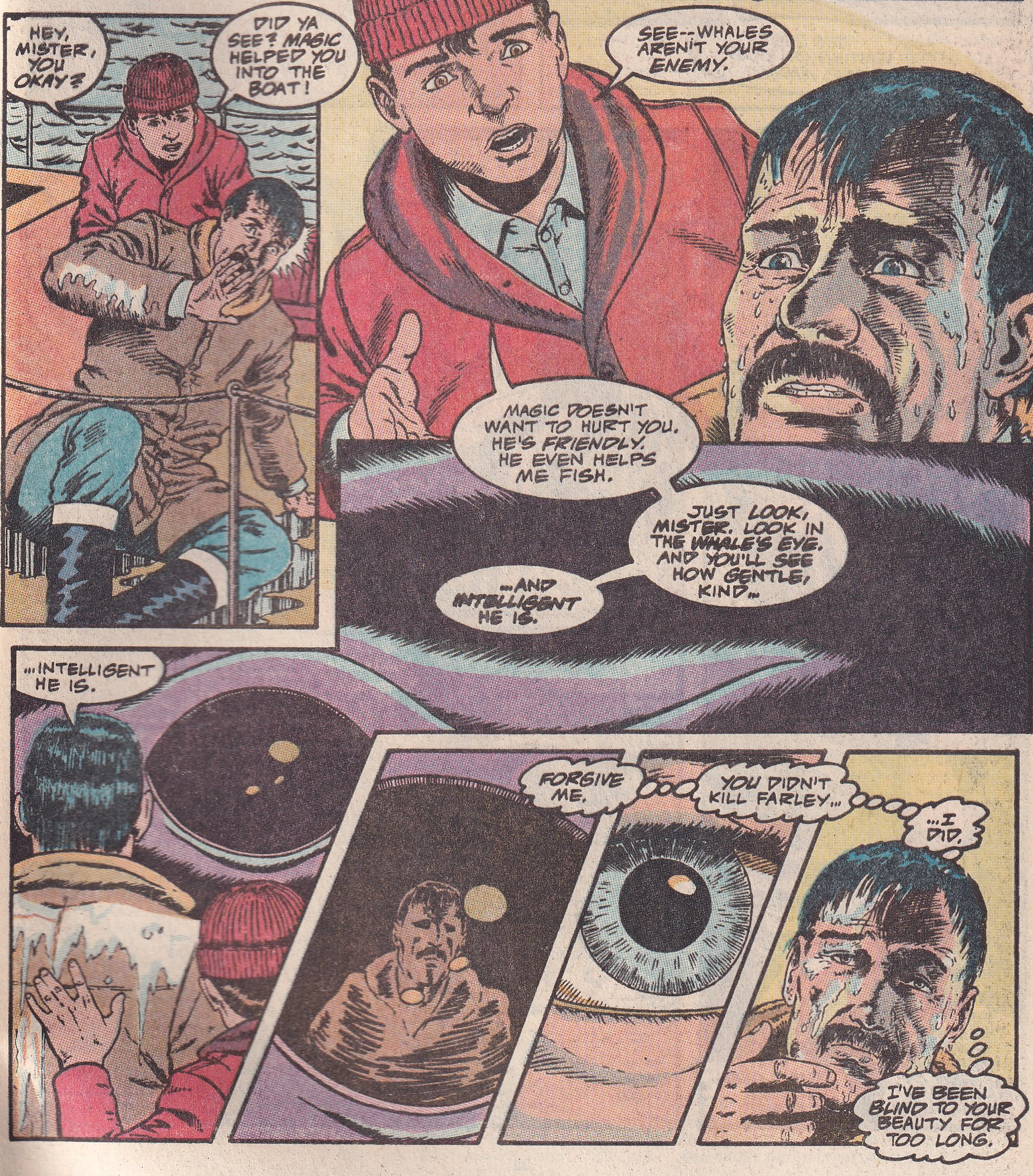
As it turns out, the humpback--named "Magic" after Magic Johnson--has befriended a small boy named Pepper, whose timely intervention causes the whaler to see the light and spare the creature. The denouement: after his transformative encounter, the whaler opens a whale watching business instead. The layouts by Barras here are high-density with competent water details (though an absolutely dreadful whale), and the story by Hollis Bright--who looks to have written just a few pieces--isn't terrible. File this thing in "weird superhero environmental commentary" and forget about it.
Power Ranking: Aquarian (B+), Wolverine (B+), Namor (B-), Devil Slayer (C-)